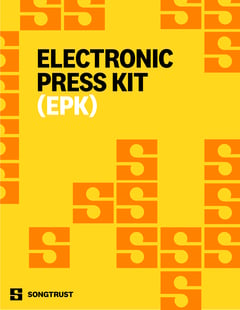While they were once considered a sign of “selling out”, sync deals have become a significant source of income among independent musicians in recent years. According to a recent Global Music Report from IFPI, syncs grew 22.3% in 2022, representing $640.4 million in revenue and outpacing gains in everything from streaming (11.5%) to performance rights (8.6%) to physical formats (4%).
Tim Miles, the senior VP of sync for Warner Music Group’s UK/Europe division, had this to say about the segment’s encouraging growth: “Due to an explosion of content, there are now something like 1 million sync opportunities a year…To stay on top of that you need scale and you need a global approach.”
Miles cites Kate Bush’s “Running Up That Hill” sync in “Stranger Things” as the clearest example of how a hit television show, movie or video game can turn a track — no matter how old — into an instant hit. “[Its success has] shown some of our artists just how powerful TV and film can be for them,” explains Miles, “and how in the age of streaming a spark from sync can cause a forest fire that wasn’t possible 10 years ago.”
While there’s no denying the potential impact of a well-placed sync, it’s important to know how to handle the many questions you may face while deciding whether to sign a sync deal. Let’s start with a simple one….
What is “Sync”?
In the music industry, “sync” refers to synchronizing audio (a song or piece of music) with any form of visual media. That includes films, TV shows, commercials, video games, and online content like social media posts and YouTube clips.
How Do You Find Sync Deals?
The question of how to get a sync deal isn’t as simple as putting your songs on Spotify and hoping someone will stumble upon them. It’s more about building relationships and being proactive in pitching your work to as many potential sync licensing partners as possible.
“Sync is all about networks,” says Miles. “It’s about knowing the film studios, knowing the game developers, knowing the agencies, and having the experience to know when to push and pull.”
When Should You Consider Sync?
Much like when you’re looking to land a new job, there’s no point in going down the sync licensing path without covering all the bases in your back catalog first. That includes releasing and distributing your music; properly registering every piece with the correct metadata; knowing each song’s individual rightsholder info; and having WAV-quality instrumentals and stems on hand in case a client needs them.
They shouldn’t be pursued without doing your research either. “Before pitching to a music supervisor,” says industry expert Matt Block, “ask yourself if your sound is a realistic fit.”
If not, keep looking. After all, content is king these days, and showing no signs of slowing down. Or as Tom Stingemore, the president of sync & creative for Hipgnosis Song Management, put it in a Synchank post, “There’s a sea change underway, and the scale of the opportunity is astounding.”
What Rights and Parties Are Involved in a Sync Deal?
Every song has two unique copyrights: one associated with its original recording, and one associated with its underlying composition. Audiovisual producers must get permission to license both sides of a song from its rightsholder or their representative. This is often publishers in the case of composition rights, and labels or distributors when it comes to original recordings.
Please note: While Songtrust does not take exclusive sync rights or actively pitch songs for sync deals, we are happy to help you negotiate sync deals for our standard 15% administration fee on any revenue we collect on your behalf. This allows you to maintain full control of your work while still benefiting from our support in managing your sync revenue.
Who Approves a Sync Request?
Each rightsholder involved in a song – for both the underlying composition and the recording – needs to approve and license the rights for synchronization use. This can be fairly straightforward when an artist is the sole writer of a song and also owns the recording. But it can also involve many different parties, such as when there are 10 songwriters and the recording is controlled by multiple entities. Each rightsholder would need to give approval in that case, and if anyone rights holder denies the usage, the sync cannot move forward.
What Questions Should You Ask a Music Supervisor Before Accepting an Offer, and How Do You Ensure You’re Not Being Negatively Exploited?
A rightsholder should ask for as much information about the usage as possible, including what media, territory, and term the licensee needs, production information, the length and type of use, a scene description, which recorded version is being used, and any other relevant details. The more information you have, the better you will be able to understand the use and make sure you are comfortable approving it and receiving a fair sync fee.
It is also very common to negotiate “most favored nations” (MFN), which stipulates that your terms will be changed to match more favorable terms (e.g. higher fees) granted to any other rightsholder of a song you co-own (such as publishers, or recording owners).
What Kinds of Clauses Might You See in Sync Deals?
You will typically see all the details of a synchronization use outlined in the agreement, including media, territory, term, fee, timing/type of use, and payment terms, as well as any restrictions on the use and/or reservations of rights. You will also find an area where you grant the synchronization right along with any other applicable rights, such as performance rights or mechanical rights. Other “boilerplate” terms often make an appearance, too, such as warranties and representations, a choice of law provision, and indemnification, assignment or MFN language.
What Kind of Publishing Royalties Do You Earn Through Licensing Deals?
You can earn multiple income streams for synchronization usage and licensing deals within the music industry. The synchronization fee is most often flat and upfront, but it can also be an advance based on future royalties, or simply royalties with no upfront fee. It all depends on the media and approved terms.
You also earn performance royalties when audiovisual content is broadcast or performed to the public (such as on a TV station or streaming service like Netflix), and mechanical royalties for any physical copies or downloads of a TV show or movie that licensed your music. As several experts have already stated, the financial and professional opportunities really are endless around sync licensing.
“2022 was another landmark year in sync,” says Stingemore, “with significant commercial success resulting directly from high-profile sync placements. As an industry, we should see this as a validation of the work that we do for our artists and songwriters. And we should all be aiming to repeat it, of course.”
For more information on how to get a sync deal and make the most of licensing music, check out our free Sync Crash Course.






